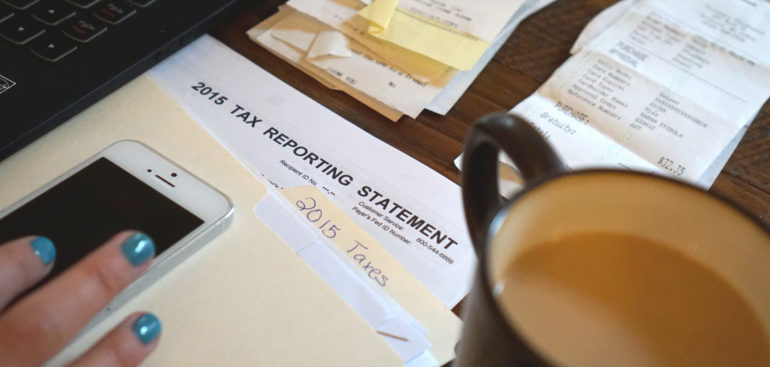The IRS Fresh Start Program is nothing new. It dates back to 2011, and has been designed to give taxpayers and small businesses burdened with first-time tax debt an opportunity to straighten things out and get out of debt while also avoiding tax liens.
Over the years, it has undergone significant changes. The majority of the provisions outlined in the initiative are designed to make applying for tax relief programs and paying back taxes a far easier process.
So, if you are dealing with back taxes and tax debt, chances are you have seen or heard about the IRS Fresh Start Program on TV or the radio at some point. Do you qualify for it? How can the Fresh Start Program help you get a second chance to get back on track with your taxes? What does it include? All these, and more, will be answered here.
How Does the IRS Fresh Start Program Work?
The Fresh Start Program, sometimes referred to as the “IRS second chance program”, was created by the IRS to help taxpayers that owe back taxes. In 2011, it was a prerequisite for them (taxpayers) to have no federal tax liens filed against them. The IRS Fresh Start debt resolution program was focused on the following:
- Making it easier to obtain a Federal Tax Liens (FTLs)release right after paying the debt.
- Enabling small businesses to obtain Installment Agreements (IAs) easier.
- Allowing an individual taxpayer that entered into DDIA (Direct Debit Installment Agreement) withdraw Federal Tax Liens more frequently.
- Making it easier for more taxpayers to qualify and use the Offer-in-Compromise* program by expanding and streaming the qualifications of the particular initiative.
- Lessening the number of Federal Tax Liens being filed by increasing the dollar amount that caused FTLs being filed from $5,000 to $10,000 (a few months later, it was raised to $25,000).
In 2012, the IRS Fresh Start Initiative was further expanded, allowing even more financially distressed taxpayers to qualify for it. Part of the reforms targeted addressing real-life situations that typically cause individuals to fall behind on their taxes.
The IRS Fresh Start Program revisions included an expansion of the amounts and types of expenses the IRS would consider relevant and reasonable when determining the money a taxpayer could afford to pay every month. Among these were local and state tax debts, student loans, and allowable living expenses.
The reason behind this expansion of the IRS Fresh Start relief program was to enable those struggling financially the most to clear up their debt faster than in the past.
Also, when a taxpayer considers benefiting from an Offer-in-Compromise program, the IRS is now more flexible in calculating the individual’s future income. This makes it easier for a taxpayer to qualify for an Offer-in-Compromise.
About the Offer in Compromise Program & Reasonable Collection Potential
An Offer-in-Compromise is a program that enables taxpayers with due tax debt to come into some sort of an agreement with the IRS so that their tax liabilities are settled for less than the total amount they owe. For a taxpayer to have the chance to clear their debt via the Offer-in-Compromise program, the IRS should first calculate the taxpayer’s income and assets to determine the reasonable collection potential. This refers to the amount of money the IRS determines a taxpayer can pay for his/her tax debts and is basically his/her monthly disposable income and the liquidation value of his/her assets.
Unlike in the past, the IRS now calculates a taxpayer’s collection potential by looking into 12 months of future income (down from four years) for offers paid in less than five months and two years of future income (down from five years) for offers paid in 6-24 months. This gives some taxpayers the opportunity to have their tax issues resolved in 48 months, when, in the past, they would need 4-5 years.
The three prevalent types of Offer in Compromise are:
- Doubt as to Collectibility – Enacted when you owe back taxes that it is impossible for you to pay even if you sold all of your assets.
- Doubt as to Liability – You can dispute your tax liability provided that there is a relevant legitimate disagreement in argument, law, or facts.
- Effective Tax Administration – Applies when the collection of tax debt will generate considerable economic hardship for you in the future. So, you may be able to pay your tax debt, but doing so will put you in financial strain in the long run. In this case, the IRS may settle your tax bill.
Primary Provisions in the IRS Fresh Start Program
Besides Offers in Compromise, the IRS Fresh Start initiative can contribute to delivering further benefits:
- Tax lien avoidance – Under the IRS Fresh Start program tax liens are NOT filed for debts less than $10,000, except for cases when the penalties and back taxes surpass $10,000. This helps avoid the negative effects of tax liens (i.e., attach the lien to all the assets of the in-debt taxpayer until they repay their debt). The IRS may also help withdraw a tax lien notice if one is filed under specific circumstances: (1) you pay for your debt via a low-user-fees Direct Debit installment agreement, where you agree the IRS automatically makes monthly payment withdrawals from your checking account or (2) pay your debt and remain current with all the estimates tax filings and payments.
- Installment agreements & penalty relief – The Fresh Start program helps avoid some tax penalties by increasing access to streamlined installment agreement with the IRS. Taxpayers can choose between five types of installment agreements, depending on the tax debt owed (for less than $10,000 to over $25,000) and the repayment period (between 3 years or less and longer than 24 months).
Other important changes in the Fresh Start Program:
- For on-going businesses, the IRS no longer includes equity in income-producing assets in their calculation of reasonable collection potential.
- When it comes to the factors that determine when a dissipated asset is included in the calculation of reasonable collection potential, the Fresh Start program comes further refreshed as it narrows the classification and parameters involved.
In the end, it is best to consider the Fresh Start Program more of a tax relief toolbox rather than a singular form and enrollment. The initiative now includes a set of measures designed to help small businesses and individuals rectify their tax problems and get second chance.
Do I Qualify for the IRS Fresh Start Program?
Some of the general requirements the majority of tax relief applicants must meet are as follows:
- Small business owners and self-employed workers must make all necessary estimated tax payments for the current year.
- Business owners with employees need to make all required federal tax deposits.
- You need to prove that you are unable to pay your tax debt because you lack assets or money.
- You should not be involved in an ongoing proceeding for bankruptcy.
- You must file all tax returns as obliged by law, even if you are unable to pay them.
Depending on which tax relief program you wish to apply for, you also need to take into consideration additional requirements. For instance, applying for an Offer in Compromise, you need to complete specified IRS forms (see below) as you will be called to provide detailed financial information.
On the other hand, a streamlined installment agreement requires that you owe less than $50,000 or that you:
- Can pay a larger liability down to $50,000.
- Have ensured your tax filings are up-to-date through the current tax year.
- Have not fallen behind on tax payments with the IRS in the past.
- Can pay off the remaining debt in up to 5 years (60 months or less).
- Don’t incur new tax debt during the installment agreement period.
- Stay current with tax filings and maintain the installment agreement during the time it is in effect.
- File for an Offer in Compromise and can pay off the settlement amount you have agreed on within 12 months.
IRS Fresh Start Program Qualifications
| Taxpayer | Businesses |
| Owes less than $25,000* | Owe less than $25,000. ** |
| Can pay their initial debt down below $25,000 * | Can pay the due amount (up to $25,000) within 34 months. ** |
| First-time tax debtor | Are current with federal tax filings. ** |
| Are up-to-date with federal tax payments. ** | |
| First time falling behind on IRS tax payments. ** |
*You might also qualify for a federal tax lien withdrawal.
** You might also qualify for the abatement of specific penalties.
How Do I Apply for the IRS Fresh Start Program?
There is a different application route per the IRS Fresh Start program you wish to benefit from. Here are the details required when you apply for IRS Fresh Start:
- Payment plans – You can download and fill out the Form 9465 (Installment Agreement Request). More details here.
- Installment plans – The application depends on whether you are a business owner or employee and the total debt owed.
- Offers in Compromise – You can file Form 433-F, 433-A, and Form 656 to initiate the process.
Note that it may take from a few minutes and up to 48 months to receive approval. Given the many parameters tied to the IRS Fresh Start program, trying to address the issue on your own may compromise your ability to take full advantage of the initiative. So, before you do anything, it is paramount to understand the ins and outs of the program first.
It is also critical that you assess your situation properly so that you can make the most informed and educated decision when choosing a solution.
For that reason, if you have a delinquent tax debt with the IRS or you’re in the midst of an IRS audit, it’s best to consult trusted tax professionals like us who will actively analyze your situation and strategize a plan that will best suit your unique requirements. Additionally, we can become your voice and aggressively negotiate with the IRS (and possibly even settle your debts for much less than what you owe at that given time) on your behalf.
Contact us today for a free tax consultation and let’s see how we can make the most of the IRS Fresh Start program for you.




